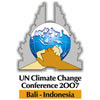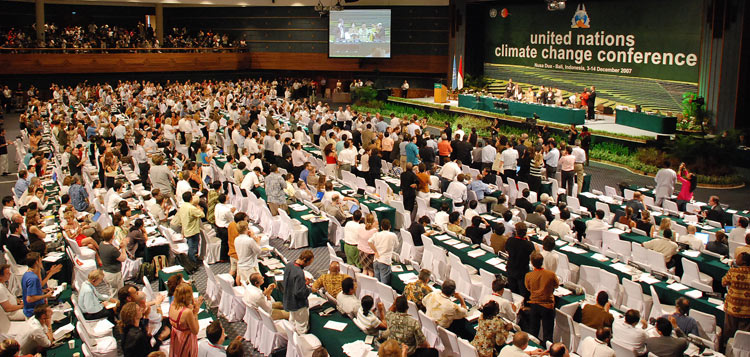Quick Guide to the Bali Action Plan
Quick Guide to the Bali Action Plan
On Saturday, December 15 in Bali, Indonesia, representatives of 187 countries agreed to the Bali Action Plan. This plan provides the roadmap for negotiating new commitments and actions from countries to deal with global warming and fulfill the main objective of the United Nations Framework Convention on Climate Change (UNFCCC) – to stabilize “greenhouse gas concentrations in the atmosphere at a level that would prevent dangerous anthropogenic interference with the climate system.”

Informed by the latest scientific findings of the Intergovernmental Panel on Climate Change (IPCC), the Bali Action Plan rests on four pillars for combating global warming and its impacts: (1) mitigation (or reducing global warming pollution), (2) adaptation to impacts, (3) technology development and transfer to developing countries, and (4) financial investment in mitigation and adaptation activities in developing countries. Over the next two years, negotiators will use this plan as a guide to developing commitments and actions supporting the four pillars by all countries, taking into account their national circumstances. The plan calls for the parties to finalize a new global climate change agreement at the Fifteenth Session of the Conference of the Parties to the UNFCCC in Copenhagen, Denmark in December 2009.
The Bali Action Plan represents progress in three key areas: the willingness of developing countries to consider mitigation actions, the inclusion of avoided deforestation as a mitigation option, and the increased focus on adaptation to impacts the world can no longer avoid. Despite this, much remains to be done over the next two years to achieve an agreement that can truly protect people and the planet.
Preamble
The opening paragraphs of the plan underscore the urgency of combating global warming and the need for “deep cuts in global emissions” of heat-trapping gases based on the latest findings of the Fourth Assessment Report of the IPCC. The preamble specifically notes that delay in reducing emissions limits the opportunities to achieve lower atmospheric concentrations of global warming pollution and increases the risk of more severe climate change impacts. Although the plan does not contain any quantitative emission reduction targets, it refers in a footnote to the conclusions of the IPCC’s Fourth Assessment Report on levels of emission reduction necessary to stabilize atmospheric concentrations of greenhouse gases at various levels.Mitigation
Delegates agreed to consider a variety of issues relating to mitigation including, among other things:- Setting a long-term global goal for emission reductions;
- Further emission reduction commitments and actions from all developed countries;
- Mitigation actions by developing countries in the context of sustainable development and supported by technology, financing and capacity-building assistance from the developed world;
- Policies and incentives for reducing emissions from deforestation in developing countries; and
- Other sector-specific and market-based approaches to mitigation.
Adaptation
From vulnerability and financial needs assessments to integration of adaptation actions into national planning to enable climate-resilient development, the plan lays out a comprehensive set of issues to consider for dealing with the increasingly urgent adaptation needs of countries around the world. The plan specifically acknowledges the vulnerability of the least developed countries, small island developing States, and African countries affected by drought, desertification and floods and the need for international cooperation to support implementation of adaptation actions.Technology development and transfer
Recognizing the need for the development and deployment of technology to support mitigation and adaptation policies, the plan calls for the consideration of mechanisms to accelerate the deployment, diffusion and transfer of affordable environmentally sound technologies, especially to developing countries. It also calls for cooperation on research and development of current, new, and innovative technology.Financial investment
The plan calls for consideration of a variety of ways to provide financial resources and investment to support mitigation, adaptation, and technology cooperation policies. It specifically calls for negotiators to consider polices that improve access to adequate, predictable, and sustainable financial resources, incentives for developing countries to enhance implementation of national mitigation and adaptation actions, and ways to mobilize public- and private-sector funding and investment and encourage carbon-friendly investment choices.
To watch Chairman Markey's Second Life speech to the UN in "Virtual Bali" please CLICK HERE.

The Select Committee was active during the 110th and 111th Congresses. This is an archived version of the website, to ensure that the public has ongoing access to the Select Committee record. This website, including external links, will not be updated after Jan. 3rd, 2010.
![]() del.icio.us
del.icio.us
![]() Digg this
Digg this
![]() Reddit
Reddit
![]() Stumbleupon
Stumbleupon



